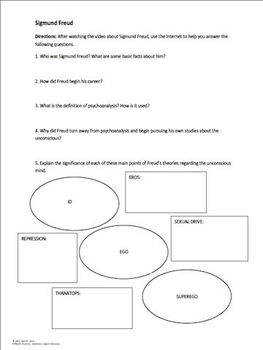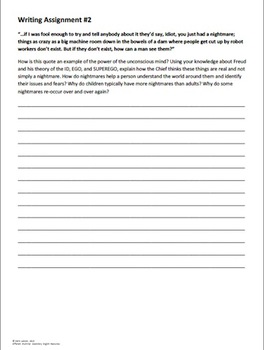One Flew Over the Cuckoo's Nest Complete Literature Guide
Different Drummer Secondary Resources
539 Followers
Grade Levels
9th - 12th, Higher Education, Adult Education, Homeschool
Subjects
Resource Type
Standards
CCSSRL.11-12.1
CCSSRL.11-12.2
CCSSRL.11-12.3
CCSSRL.11-12.4
CCSSRL.11-12.5
Formats Included
- PDF
Pages
99 pages
Different Drummer Secondary Resources
539 Followers
What educators are saying
It was great to have a literature guide to go with the book. There were some sections that students had to be more independent in, so that was good as well.
Description
This novel, by Ken Kesey, is an excellent novel to ready with higher level high school students and college students. It is extremely interesting and provides a lot of content to analyze and discuss.
Within this literature guide are deep and dynamic analytical questions that ask students to focus on quotes, characters, plot development, themes, literary devices, and writing assignments that ask students to provide a comprehensive review of the content.
There is background information about Ken Kesey, the evolution of mental institutions, activities on Sigmund Freud, and the impact of dreams and nightmares. There is a Final Project essay project included, a teacher guide, and teacher notes about the themes and content.
In addition, there are also Question of the Days, or Discussion Questions to provide students with additional information and complex concepts.
*Please provide feedback!! I really appreciate it!
Within this literature guide are deep and dynamic analytical questions that ask students to focus on quotes, characters, plot development, themes, literary devices, and writing assignments that ask students to provide a comprehensive review of the content.
There is background information about Ken Kesey, the evolution of mental institutions, activities on Sigmund Freud, and the impact of dreams and nightmares. There is a Final Project essay project included, a teacher guide, and teacher notes about the themes and content.
In addition, there are also Question of the Days, or Discussion Questions to provide students with additional information and complex concepts.
*Please provide feedback!! I really appreciate it!
Total Pages
99 pages
Answer Key
Included
Teaching Duration
1 month
Report this resource to TPT
Reported resources will be reviewed by our team. Report this resource to let us know if this resource violates TPT’s content guidelines.
Standards
to see state-specific standards (only available in the US).
CCSSRL.11-12.1
Cite strong and thorough textual evidence to support analysis of what the text says explicitly as well as inferences drawn from the text, including determining where the text leaves matters uncertain.
CCSSRL.11-12.2
Determine two or more themes or central ideas of a text and analyze their development over the course of the text, including how they interact and build on one another to produce a complex account; provide an objective summary of the text.
CCSSRL.11-12.3
Analyze the impact of the author’s choices regarding how to develop and relate elements of a story or drama (e.g., where a story is set, how the action is ordered, how the characters are introduced and developed).
CCSSRL.11-12.4
Determine the meaning of words and phrases as they are used in the text, including figurative and connotative meanings; analyze the impact of specific word choices on meaning and tone, including words with multiple meanings or language that is particularly fresh, engaging, or beautiful.
CCSSRL.11-12.5
Analyze how an author’s choices concerning how to structure specific parts of a text (e.g., the choice of where to begin or end a story, the choice to provide a comedic or tragic resolution) contribute to its overall structure and meaning as well as its aesthetic impact.




